0198 A micelle is a second-order emergent phenomenon.
Here is a diagram of the sensible construction.
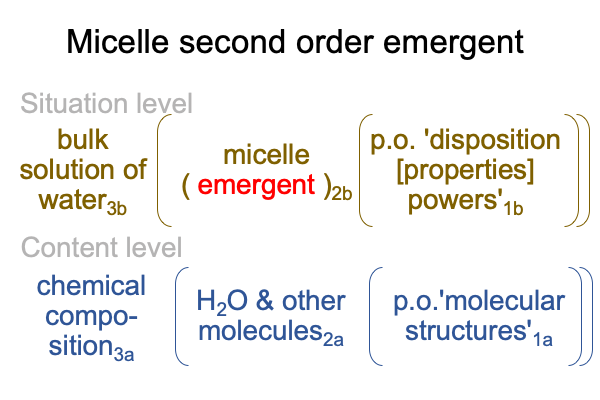
0199 Now, if I remember the previous example of emergent phenomena, the next step in an ordered conceptualizationvirtually contextualizes the micelle through a a dissipative process that exploits the bit of free energy captured by the fact that water drives the alkane part of the fatty acid out of bulk solution and pulls the carboxyl part of the fatty acid into bulk solution.
0200 The potential of a micelle1c is that it forms a membrane between the inside and the outside.
The contents within the membrane include the stuff of life.
In other words, an organelle (for eukaryotes) or a cell (for bacteria and for archaea) consist of living components within a membrane.
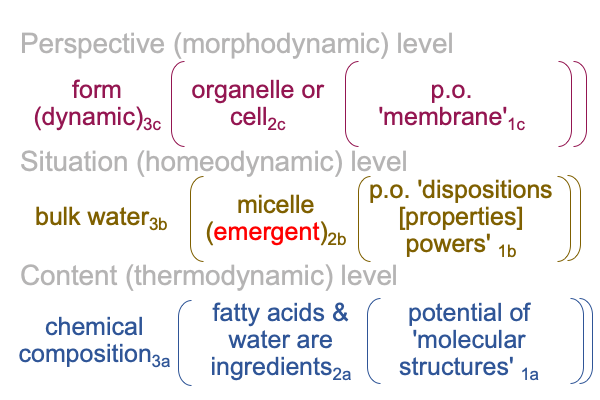
0201 With that in mind, no wonder organelles2c and bacteria2c add proteins that stabilize the membrane’s dynamic form3c. Plus, they2c synthesize fatty acids2a that make for particularly robust cell walls2b.
0202 In archaean life, downward causation becomes apparent, because cellular membranes1c put the micelle2b into perspective and the properties of fatty acids1b in water select for some fatty acids and not others2a. Archaean cells with fatty acids that make good membranes survive.
The problem, for me, is that the jump from the situation to perspective levels is enormous.
The chemistry and properties of micelles is a topic amenable to empirio-schematic models.
The organization of membranes in living cells is a huge leap in complexity.
Such is the leap from second-order to third-order emergent phenomena.
0203 Can empirio-schematics model third-order emergent phenomena?
May I consider an example?
Archaean cells living in a volcanic hot spring rely on the capacity of their micellular walls to maintain integrity at high temperatures. They do so by incorporating particular fatty acids, with extended fatty tails that have the power to be excluded by water, even at high temperatures, and charged carboxy heads that tend to remain in water, even at high temperatures.
0204 Here is the example as a virtual nested form in the realm of normal context.
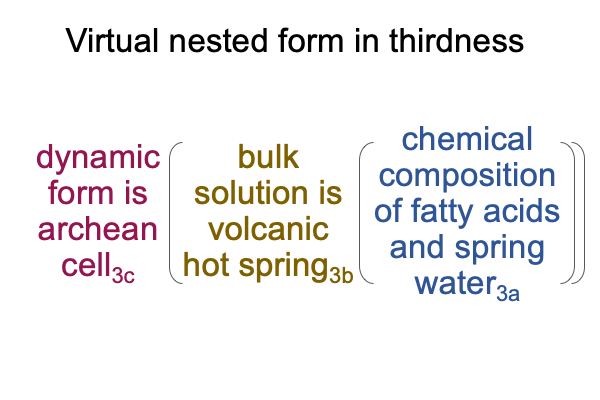
0205 Tabaczek notes that modern science, since its inception, labors to build models for how things work. Science asks, “What are things made of? How do they operate?” Empirio-schematics builds models on truncated material and efficient causes. If the model works, then a triumphalist scientist will proclaim, “This model is more illuminating than the thing itself.”
0206 What a proclamation!
What does the proclamation really proclaim?
Is everyday science able to game emergent phenomena?
0207 Let me say that the dynamical living form3c represents a huge leap between the perspective level normal context3cand bulk solution in volcanic spring3b, certainly much larger than between bulk solution3b and chemical compositions of fatty acids in water3a constituting a “system”.
Say what?
0208 Let me label the actuality of archaean cells living in a particular hot spring2c as “a system”.
Now, the complexity of the archaean cell becomes a system.
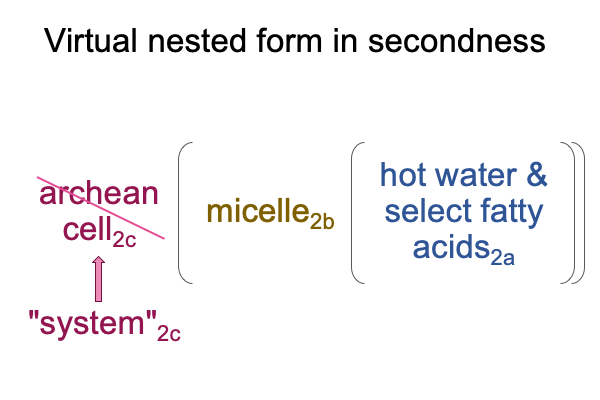
0209 This allows me to draw an association between the molecular structures of the fatty acids1a and the stability of the cellular membrane1c. The properties of the fatty acid now are relegated to phenomena, which ought to be observed and measured using techniques of chemical extraction and so on.
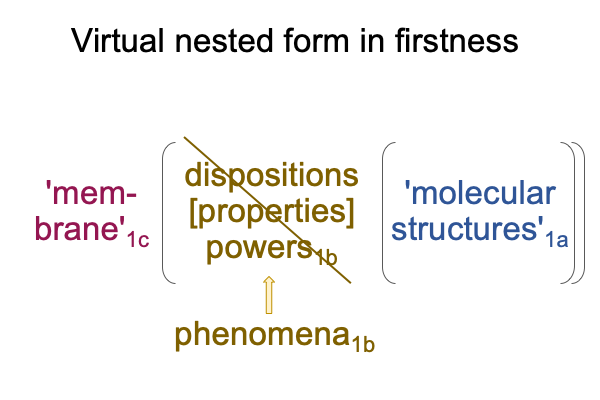
0210 The way that a reductionist games emergent phenomena follows.
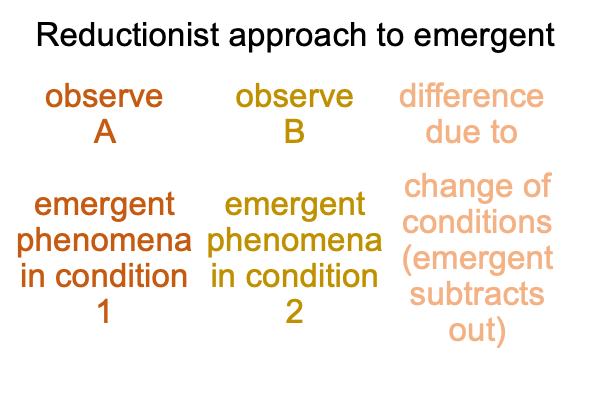
0211 Notice how the emergent phenomena subtract out, so one is only observing and measuring alterations due to changes of conditions.
0212 Comparing emergent “systems” under different conditions bypasses the ontological realness of the noumenon, the thing itself, because the comparison cancels out emergent “systems” through rigorous manipulation of laboratory conditions. The emergent “system” does not need to be accounted for, except to say, changing conditions may or may not alter its properties… er… phenomena associated with the emergent “system”.
0213 In section 1.3.3, Tabaczek writes that there is an intrinsic tension, within modern emergence theories, between ontological monism and qualitative differences between emergents.
Does this imply that a reductionist can game the concept of “nonreductive physicalism”?
I suspect so.
